Historic Archive - Image Bank
Image Bank
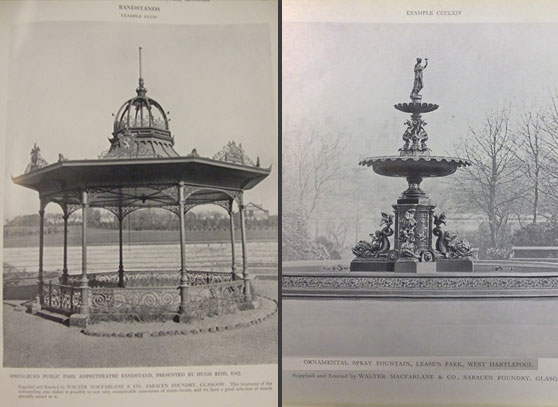
COMPANY PORTFOLIOS
Whilst catalogues are an obvious source of information, providing vast amounts of illustrations of both products and components, several of the main companies, such as the Lion Foundry and the MacFarlane Company also produced photographic portfolios illustrating their completed work in situ. Examples of these are shown above.
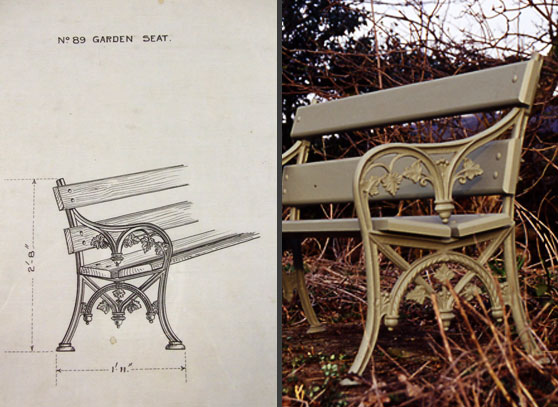
ORIGINAL ILLUSTRATIONS
While copyright laws in the Victorian era were poorly defined and imposed, companies would submit drawings of their new products to the Registration Office in an attempt to impose some degree of control. Lost Art have a selection of such drawings. The above image is of the original design submitted by the Lion Foundry, followed by an image of the same bench, now offered by Lost Art as The Crookdale.
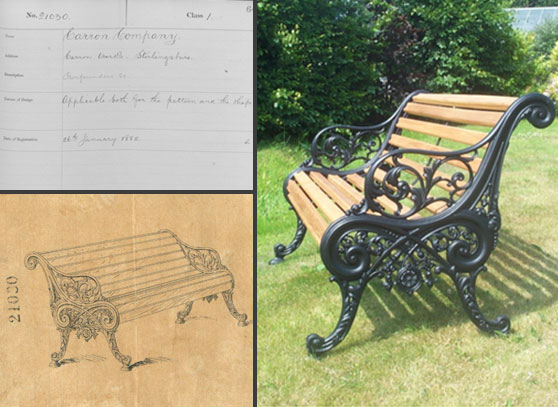
PUBLIC RECORDS
Although the storage of records has been somewhat patchy, there are still examples of original documentation available to researchers. The following documents show the original registration documents for a bench originally designed and produced by The Carron Company. These are followed by an image of the same bench which is currently available from Lost Art, now referred to as The Carron Mystery Bench.
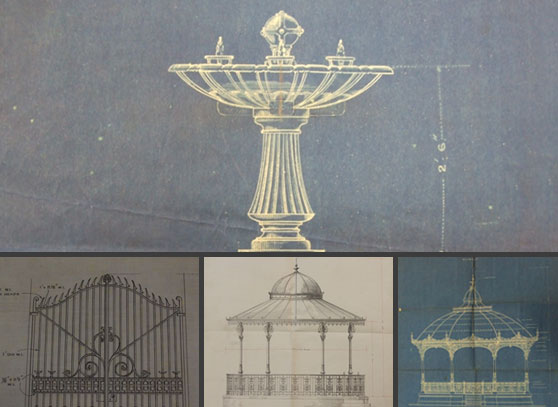
ORIGINAL WORKING DRAWINGS
Accuracy in design, method and materials are important considerations when reproducing or restoring structures of historical significance. All of these can be informed by consideration of original working documents, such as annotated drawings, architects designs and blueprints. Lost Art have amassed a number of such documents, again, these are available for viewing or can be included in condition reports or specifications as part of our Consultancy services.
Documents
In addition to the company catalogues and historic postcards that Lost Art keep in their archives, we also retain a number of other types of documents that can inform us whilst planning or conducting restoration projects, or forming the basis of important aspects of our consultancy services .
The following image is an example of the sort of water colour illustrations supplied by the foundries, showing their products to the best advantage.
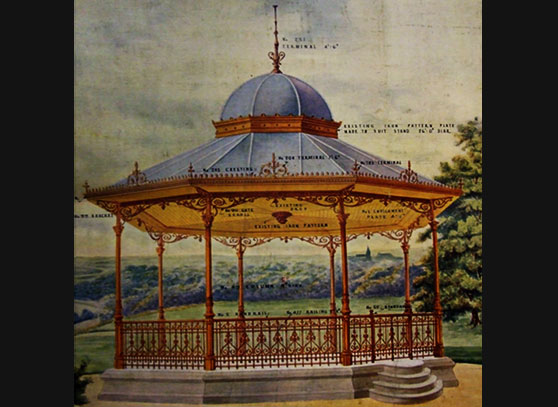
These watercolour productions are mini masterpieces in their own right and though unfortunately few remain, they are an important source of information about aspects of bandstand production such as colour schemes, as there was no photographic records showing the original appearance of many bandstands and fountains. The fact that such documents show often elaborate and whimsical decorative painting, this contradicts the often held view of the Victorian period as being dour and devoid of colour. In fact the period of uniformly black or green structures came later as the effort needed to maintain the original gaiety of the imposing landscape features became too much for many involved in the maintenance of parks.
Illustrations
For many companies, an order of a bandstand or fountain represented a significant order and when a prospective customer had been identified, further efforts would be made to secure the order. This sometimes took the form of colour visualisations of the proposed bandstand in a naturalistic setting. As this was a time before Computer Aided Design brought this type of marketing within the range of most companies, the supplied material could be a lavish affair.
In addition to providing a useful historic record of the past appearance of structures of historical importance, postcards can also be useful in providing a reference as to the state of a particular location or structure prior to restoration. This can then be used to gauge the accuracy of a particular restoration.
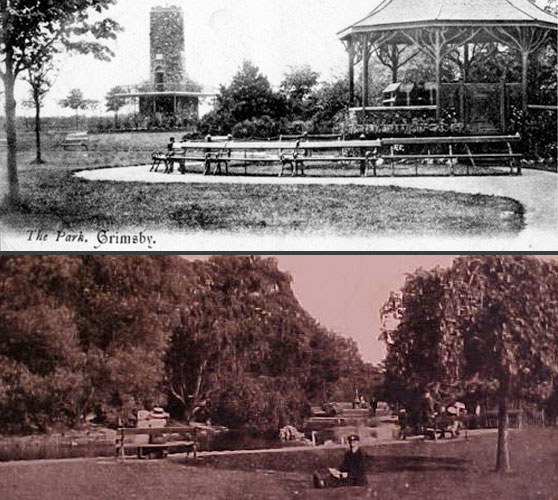
The above postcards show the original benches installed in People’s Park, Grimsby. As one of the earliest public parks, the location is of significant historical importance and when restoration work was undertaken it was vital that accuracy was maintained to all aspects of the project.
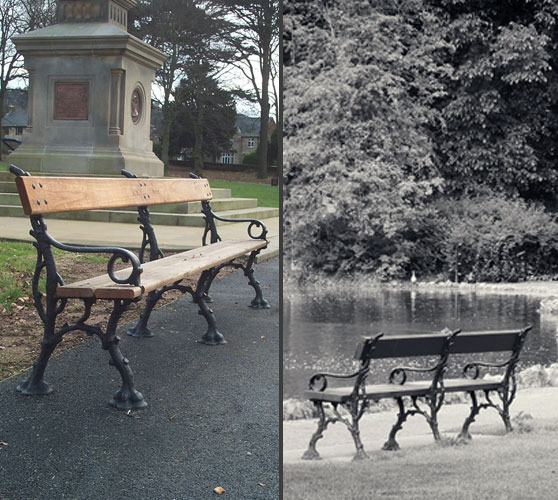
From the postcards, we were able to identify the benches as being an original Coalbrookdale Foundry rustic style design. Lost Art Limited had a copy of this pattern of bench in our collection, offered as the Whitworth Bench.
Armed with this information, we were able to offer exact replicas for the project, with the following image illustrating the newly produced and installed benches back in an original location.
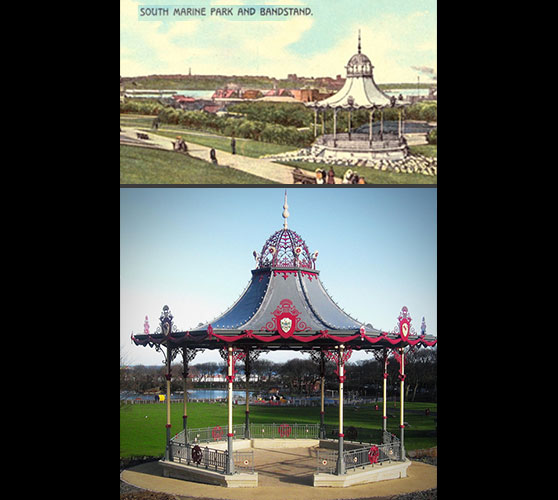
Similarly, the bandstand in South Marine Park in South Shields had been removed but as part of the major restoration of the park, a replica of the original structure was required. Postcards of the original bandstand were a vital part of the reconstruction process. Although the bandstand was easily identified as having been produced by the MacFarlane Company at their Saracen Foundry, it was soon apparent that the bandstand also featured some bespoke features not included in other sources within our archive, such as our copies of MacFarlane catalogues. Close examination of the available postcards revealed the detail of the unusual components, allowing us to fully reproduce the original bandstand.
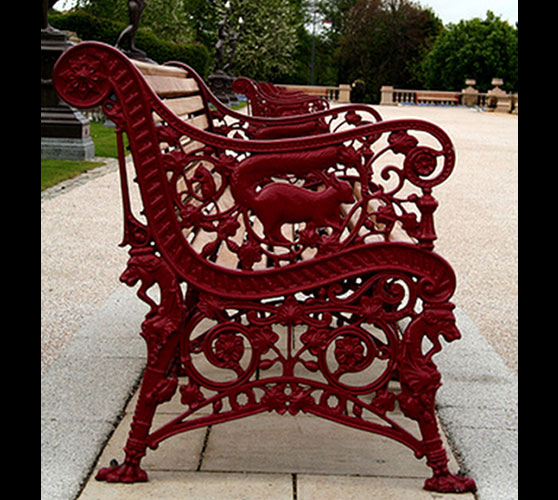
The postcards also showed the original benches installed in the park and these were identified as being the Squirrel bench, originally produced in Glasgow by The Sun Foundry. Lost Art Limited were also able to produce a pattern for the casting of the bench supports and produce 60 replacement benches in a variety of lengths.

The postcard above illustrates the fountain in Albert Park, Middlesbrough. This is followed by an image of the same fountain prior to its restoration by Lost Art. The upper sections of the fountain had been lost and whole structure is seen to be in a rather sorry state, rather than the glorious centrepiece it had been intended as.
Using the postcard as a basis for our planning, we were able to identify and source or produce the required components, enabling us to produce an award winning, fully restored fountain.
Postcards
Lost Art Limited have developed a significant collection of historical postcards, which have proved useful in a number of respects for the development and execution of restoration projects.
